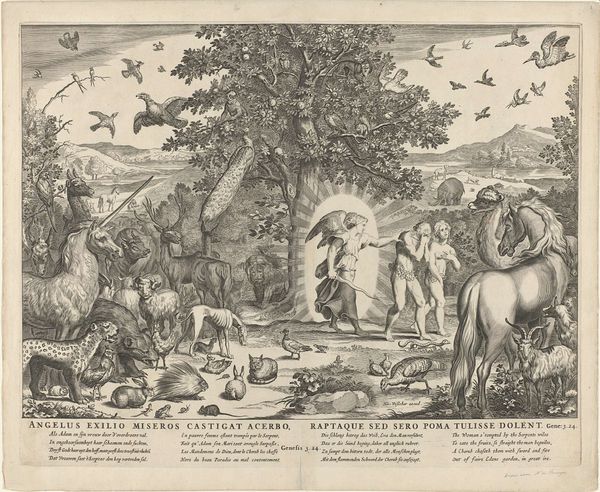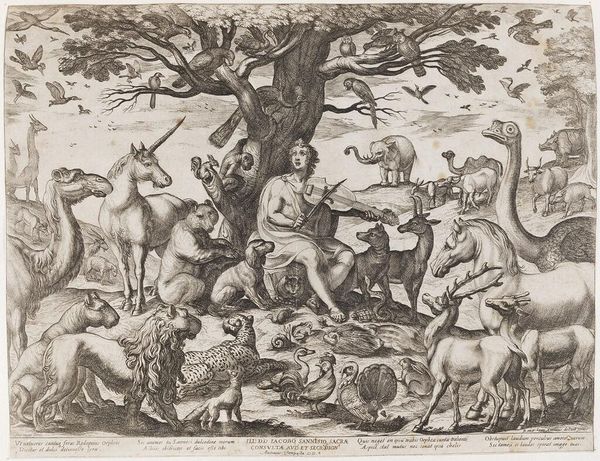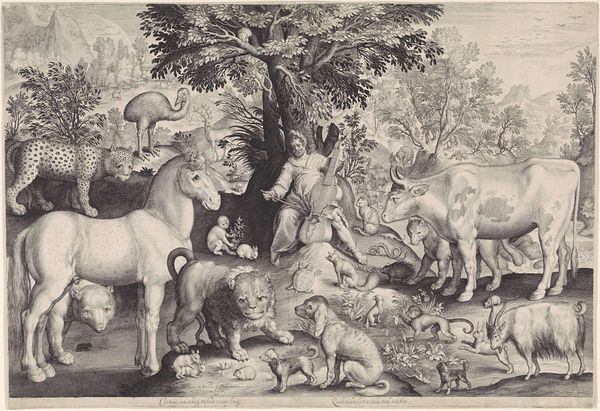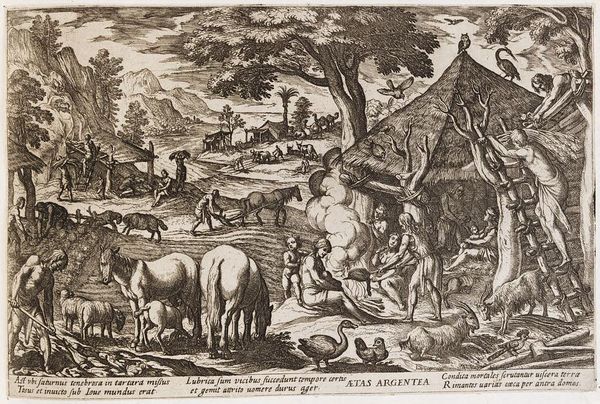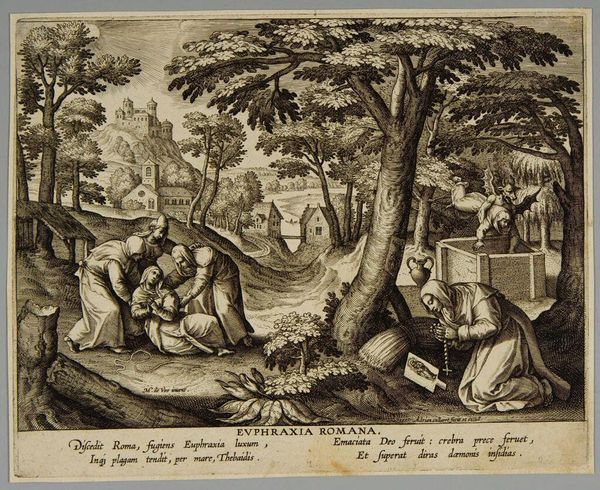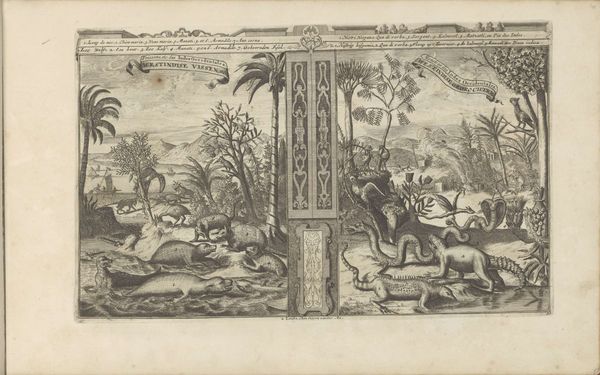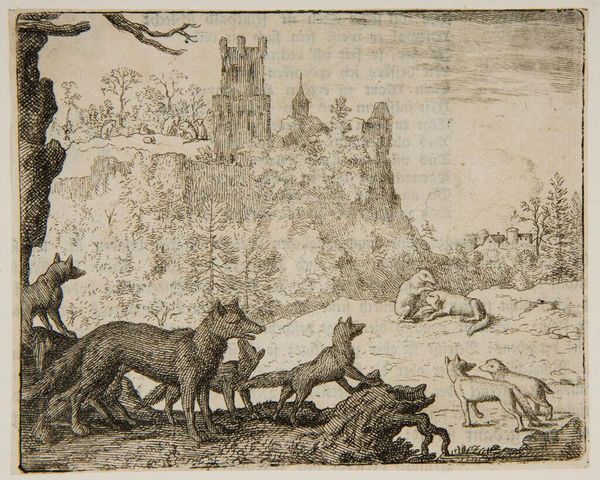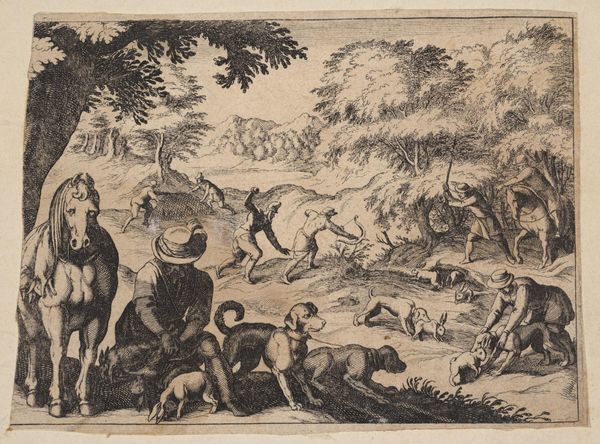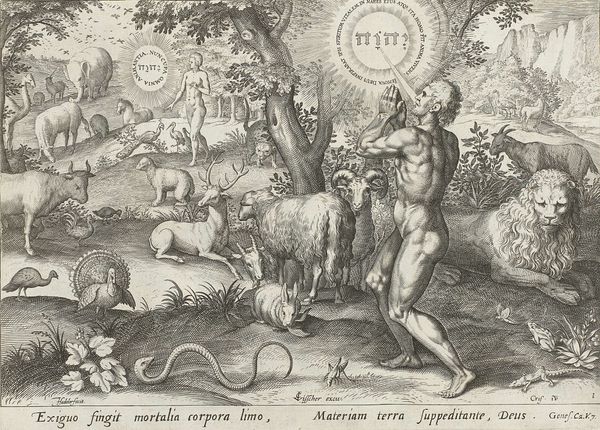
drawing, watercolor
#
drawing
#
narrative-art
#
landscape
#
figuration
#
watercolor
#
coloured pencil
#
folk-art
#
history-painting
Dimensions: sight size: 25.6 x 36.4 cm (10 1/16 x 14 5/16 in.) framed: 26.3 x 39 x 1.4 cm (10 3/8 x 15 3/8 x 9/16 in.)
Copyright: National Gallery of Art: CC0 1.0
Editor: Here we have John Landis’s “The Temptation,” made around 1828. It’s a watercolor and ink drawing that depicts Adam and Eve in the Garden of Eden, but what strikes me is how crowded it is, teeming with all sorts of animals. How would you interpret this work? Curator: I see a deliberate commentary on the societal forces shaping religious interpretation in the early 19th century. Consider the materials: ink and watercolor, humble mediums often associated with folk art rather than high art. This suggests a democratized dissemination of religious narratives, challenging the established elite’s control. Editor: Democratized how? Curator: Think about it: this wasn't commissioned for a wealthy patron's private collection. It's closer to popular prints, meant for broader circulation, likely reproduced for a larger, perhaps even literate but less privileged, audience. Look at the inscription at the bottom – this reinforces its availability as mass produced material good to reinforce cultural beliefs of this social group. This accessibility transforms a theological concept – temptation – into a consumable product. How does this affect the art-making? Editor: I hadn’t considered that. So, by using cheaper, readily available materials and techniques, Landis makes this powerful religious imagery part of the everyday lives of ordinary people. This allows a kind of folk art retelling. Curator: Precisely! The act of artistic creation itself becomes a means of shaping social consciousness. It invites a critical assessment of how religion permeates all strata of society. I believe the inclusion of so many animals is less about depicting the "natural" world and more about representing all social actors are a stake after this moment, including and especially the non-human animals. Editor: So, it is the materials, the method of creation, and its social reach that offer the strongest meaning. Thanks for pointing that out. Curator: A pleasure. This way of seeing provides a richer appreciation for the artwork!
Comments
No comments
Be the first to comment and join the conversation on the ultimate creative platform.
